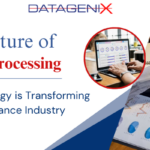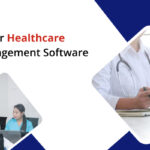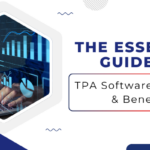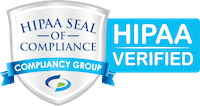Claims Software Systems: The Future of Smart Claims Handling
April 23, 2025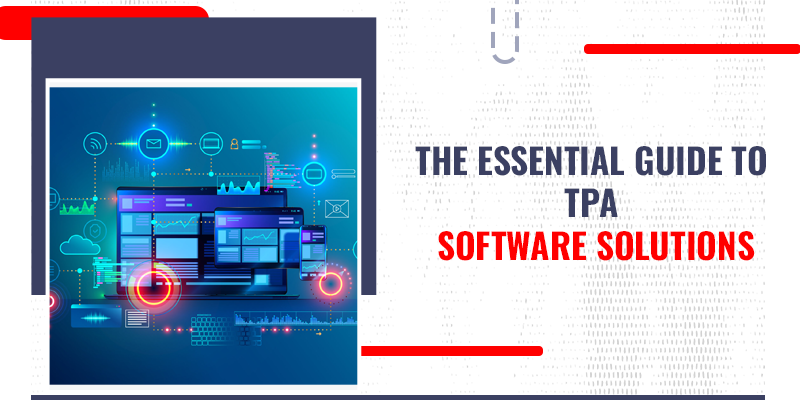
In today’s rapidly evolving administrative landscape, Third-Party Administrator (TPA) software is emerging as a transformative tool, revolutionizing the way organizations manage their operations. This article explores the significance of TPA software, its key features, benefits, and the profound impact it can have on administrative processes. The third-party administrator industry plays a pivotal role in the modern business ecosystem, especially in managing insurance and employee benefits. TPAs face numerous challenges, involving the critical issue of revenue leakage.
Understanding TPA Software
TPA software is a complete solution for streamlining and automating administrative duties that are normally performed by third-party administrators. From claims processing and policy administration to provider management and compliance, TPA software provides a variety of capabilities targeted to the specific requirements of enterprises in various sectors.
Key Features and Benefits
- Claims Processing: TPA software simplifies and accelerates the claims processing workflow by automating repetitive tasks, such as data entry, adjudication, and payment processing. This not only improves efficiency but also reduces errors and enhances customer satisfaction.
- Policy Administration: It provides a centralized platform for managing insurance policies, including enrollment, billing, and policy changes. By consolidating policy-related tasks, organizations can streamline administrative processes and ensure compliance with regulatory requirements.
- Provider Management: TPA software facilitates seamless communication and collaboration between organizations and their network of healthcare providers. From credentialing and contract management to provider directories and reimbursement tracking, TPA software helps organizations effectively manage their provider relationships.
- Compliance Management: Staying compliant with ever-changing regulations is a daunting task for organizations. TPA software automates compliance monitoring and reporting, helping organizations stay up-to-date with regulatory requirements and avoid costly penalties.
- Data Analytics: TPA software offers robust analytics capabilities, allowing organizations to gain valuable insights from their administrative data. By analyzing key performance indicators (KPIs) and trends, organizations can make informed decisions, identify opportunities for improvement, and optimize their operations.
The Impact on Operations
TPA software has a profound impact on organizational operations, driving efficiency, accuracy, and cost savings across various administrative functions. Some of the key benefits include:
- Improved Efficiency: By automating manual tasks and streamlining processes, TPA software enables organizations to accomplish more in less time, freeing up resources to focus on strategic initiatives and core business activities.
- Enhanced Accuracy: Manual administrative tasks are prone to errors, which can lead to costly mistakes and inefficiencies. TPA software minimizes errors by automating repetitive tasks and enforcing consistent processes, ensuring data accuracy and reliability.
- Cost Savings: TPA software helps organizations reduce operational costs by eliminating the need for manual labor, reducing paper-based processes, and optimizing resource allocation. Additionally, by identifying inefficiencies and streamlining workflows, organizations can lower their overall administrative expenses.
- Increased Compliance: Regulatory compliance is a top priority for organizations, especially in highly regulated industries such as healthcare and insurance. TPA software simplifies compliance management by automating regulatory reporting, tracking compliance metrics, and providing audit trails, helping organizations stay compliant and avoid regulatory penalties.
- Enhanced Customer Experience: By streamlining administrative processes and improving efficiency, TPA software enhances the overall customer experience. Faster claims processing, accurate billing, and seamless communication with providers contribute to higher levels of customer satisfaction and loyalty.
Implementation Considerations
Successful implementation of TPA software requires careful planning, execution, and ongoing support. Some key considerations include:
- Needs Assessment: Organizations should conduct a thorough needs assessment to identify their specific administrative challenges, goals, and requirements. This will help ensure that the selected TPA software meets their unique needs and delivers the desired outcomes.
- Integration with Existing Systems: TPA software should seamlessly integrate with existing systems and workflows to minimize disruption and maximize efficiency. Organizations should evaluate compatibility and integration capabilities before selecting a TPA software solution.
- User Training and Support: Comprehensive training and ongoing support are essential for user adoption and success. Organizations should invest in training programs to help users familiarize themselves with the software’s features and capabilities, and provide ongoing support to address any issues or concerns.
- Data Migration and Security: Organizations must carefully plan and execute data migration to ensure a smooth transition to the new TPA software. Additionally, data security is paramount, and organizations should implement robust security measures to protect sensitive information and prevent unauthorized access.
- Scalability and Flexibility: TPA software should be scalable and flexible enough to accommodate future growth and evolving business needs. Organizations should choose a solution that can adapt to changing requirements and scale up or down as needed.
Conclusion
The future of administration is being changed by TPA software, which helps businesses organize their processes, become more efficient, and give customers a better overall experience. TPA software helps businesses stay relevant in today’s fast-paced business world by eliminating manual chores, improving processes, and giving useful information. But for action to work, it needs to be carefully planned, carried out, and supported over time. If you use TPA software correctly, it can completely change how you do routine tasks and help your business succeed in the years to come.
How Health Claims Management Software Transforming The Industry?
February 7, 2025How Claims Software Can Transform Your Claims Process?
January 29, 2025The Need For Healthcare Claims Management Software
January 13, 2025Reasons You Should Invest in Claims Management Software
January 7, 2025The Essential Guide To TPA Software Features & Benefits
December 24, 2024Claims Management Software: Key To Streamlining Your Business
December 18, 2024How TPA Software Solutions Transformed Medical Claims Management?
November 20, 2024

